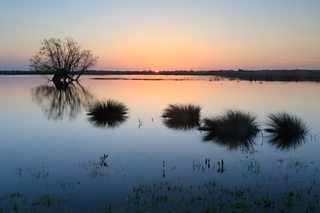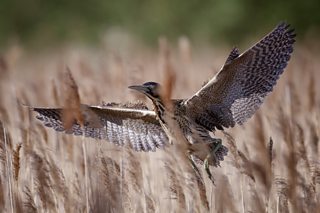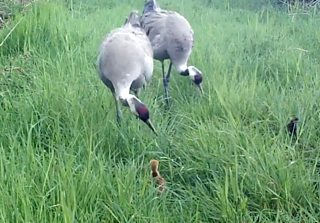A corner of England that has more species of plants and wildlife then anywhere in the UK has celebrated its 120th anniversary – with the arrival of a species possibly not seen there in centuries. National Trust owned Wicken Fen in Cambridgeshire has become a rich oasis of life since becoming one of the first national nature reserves, starting with just a two-acre patch of fenland in 1899.

Wicken Fen, cared for by the National Trust, is home to over 9,000 species. Photo by Justin Minns/National Trust.
In 1999, the Wicken Fen Vision was launched; a 100-year plan to extend the nature reserve to cover over 53 sq. km. In the last 20 years we have more than doubled the size of the nature reserve, which now covers 2000 acres, and seen the arrival of key species including water vole, otter and bittern.

Bitterns are true wetland specialists - but their colouration makes them tough to spot. Photo by Richard Nicoll.
In this anniversary year, the National Trust has celebrated the arrival of a pair of common cranes who have been successful in hatching a chick. It is the first common crane chick has hatched at Wicken Fen since we acquired the nature reserve in 1899 and started species records. We think it could actually be the first chick to be born at the reserve in over 500 years! .

This could be the first common crane chick to be born at Wicken Fen in over 500 years! Photo by Michael Holdsworth.
The common crane is on the UK's amber conservation list and, despite what its name may suggest, is also one of Britain's rarest breeding birds with only around 54 pairs recorded in 2018. There's a small breeding population in Norfolk, and small numbers pass through Britain in spring and autumn. But, at Wicken, cranes can actually be seen at any time of year.

A young common crane chick is tended to by its parents at Wicken Fen. Photo by Michael Holdsworth.
Martin Lester, countryside manager at Wicken Fen explained: "UK cranes typically nest in wetland habitats using materials found in the area. ​​​As with most species, the female does most of the incubation and cares for the chicks when they're young. The successful breeding of this chick is a reflection on the conservation work that we have been carrying out, particularly over the last 20 years.”
.
